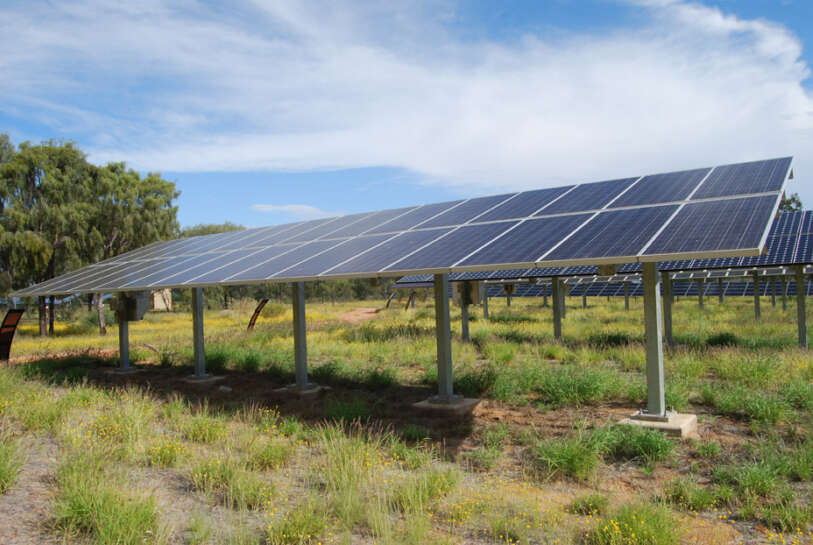| Manufacturer | BP Solar |
|---|---|
| Array Rating | 4.95kW |
| PV Technology | poly-Si |
| Array Structure | Fixed: Ground Mount |
| Installed | 2008 |
View on Map Graphs Download Data
Current Output

BP Solar polycrystalline silicon array, fixed ground mount.
Polycrystalline panels are installed widely in Australia. Their performance efficiency is slightly lower than monocrystalline panels so slightly more panels are required for a given amount of electricity – however the cost of these installations will often be lower.
Polycrystalline panels have a simpler manufacturing process than monocrystalline. Smaller silicon crystals are grown in a cluster, which is sawn into solar cell wafers.
The different silicon crystals that make up polycrystalline cells can be seen on their surface as a mosaic-like pattern. The boundaries between crystals can trap electrons, reducing the efficiency with which the panel produces electricity.
BP Solar is a global business that designs, manufactures and markets solar electricity systems.
| Array Rating | 4.95kW |
|---|---|
| Panel Rating | 165W |
| Number Of Panels | 30 |
| Panel Type | BP 3165N |
| Array Area | 37.75 m² |
| Type Of Tracker | N/A |
| Inverter Size / Type | 6 kW, SMA SMC 6000A |
| Installation Completed | Tue, 11 Nov 2008 |
| Array Tilt/Azimuth | Tilt = 20, Azi = 0 (Solar North) |

Notes on the Data
-
System Disconnection for Cabling Works
All arrays at the Solar Centre were disconnected from approximately 2.00pm to 3.00pm on Monday, 9 July 2018 in preparation for the cable between the main switchboard and distribution board being upgraded. Array sites #23-38 remained disconnected while the main feeder cable to these sites was replaced in subsequent days, but all systems were re-connected by early afternoon on Thursday, 12 July 2018.
-
Monitoring Interruption for UPS Battery Replacement
The disconnection and re-connection of the solar arrays and weather station equipment while a new site connection was being established prompted the already flattening UPS batteries which power the site’s energy meters to fail and require immediate replacement. Data recording was affected from approximately 2.30pm ACST, Monday 10 July to 4.00pm, Wednesday 12 July.
Affects weather data for DKASC, Alice Springs
> Answer to Spotlight Question
Onsite at the DKA Solar Centre in Alice Springs are a series of quiz-like Spotlight Questions at each array. Visit the centre and scan the QR code at each sign to test your knowledge – and check your answer here!
Q: What are some advantages of polycrystalline modules compared to monocrystalline?
A: Polycrystalline modules tend to be cheaper than monocrystalline modules due to the simpler steps involved in their manufacture: growing many small crystals together rather than single, larger crystals. Their production process also generates less wastage of the silicon. Polycrystalline modules are more common and tend to be the most popular choice for household applications. Compared to monocrystalline modules, they perform slightly better in warm conditions, although they have a lower temperature coefficient, meaning they often drop their efficiency more quickly as temperatures increase.
